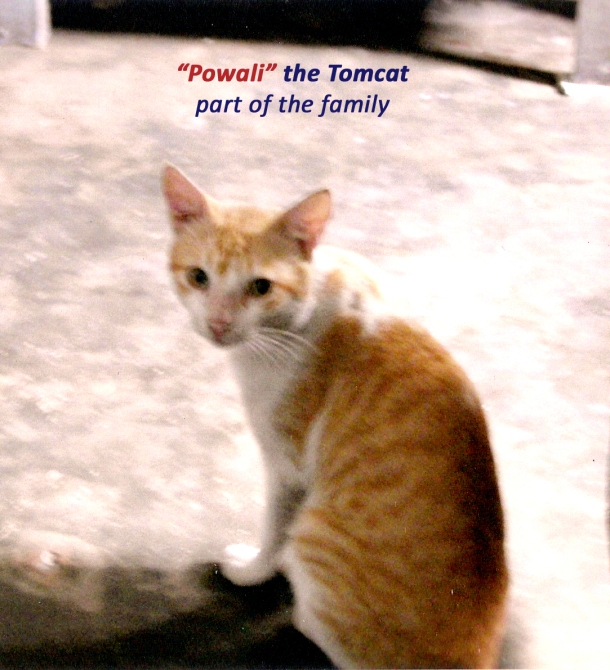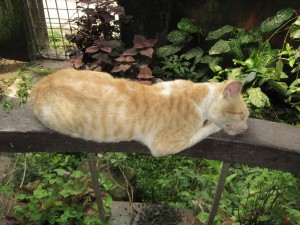(All cat pictures’ photo credit Mr Subhasish Sharma and author)
CAT-VERSION
Cat stands for : Casual American Teenager
Common Admission Test
Computerised Axial Tomography
……………………………………
Nay! Not those abbreviations, the discussion circles around the domestic cat , the quadruped carnivore preying on mice, whose crossing prompts many approaching drivers on the road to halt their vehicles. A superstition quite widespread and deep rooted.
Since the advent of the human civilization this association of superstitious beliefs with cats in good and bad extremes has fluctuated their fortunes in either ways.
Considered ‘pets and devil’ the middle ages in Europe proved to be harrowing time for the cats, more so for those of black colour. During bouts of witch hunting progroms, a commonality of that period, cats were often burned in stakes alongside their owners, condemned to die as witches or sorcerers. Right upto the reign of King Louis XIV, sack-loads of cats were burnt ritually in the unsaintly bonfires of the Saints’ Day celebrations in France.
Music lovers acquainted with the music of Sir Cliff Richards can well gauge such feelings from the ‘cat with the green eyes’ in the song Devil woman .Contrarily, in ancient Rome, in the same continent, cats were regarded as symbols of liberty.
To the ancients Egyptians, cat was a sacred animal, their moon deity Bast represented with the face of a cat. They were embalmed in mummies, side by side with their masters and mistresses and also separately in special cemeteries created for them. Capital punishment was almost the rule for slaying these feline objects of veneration. It is said that an invading Persian army blackmailed citizens of an Egyptian city named Pelusium into surrender, by threatening to throw live cats over the city walls. A consequence they feared more than a defeat.
As per an Assamese myth the cat is the aunt of the tiger and a cat killed has to be replaced by a golden replica. When a lion sneezed aboard the ark of Noah floating on the great biblical flood, the cat made its appearance, so says a middle-eastern legend. The Chinese myth on the subject likewise ascribes the origin of the cat to a mating between a lioness and a monkey.
Taxonomically, the domestic cat comes from the family Felidae ( Felis in Latin meaning a cat), its scientific name being Felis catus. Household pets and semi-domestic visitors to hearths and homes, they come as a boon when it comes to tackling rodential pests and a bane when caught stealing food items. On the whole, cats are intelligent, playful, freedom loving creatures. Some opine that this trait of independent spirit has descended from the solitary nature of their wild ancestors, surviving throughout their several thousand years of domestication and human proximity.
Prior to imposition of the British Raj in Assam, in perhaps not so long a past, when monarchy was in vogue, a cat began a story. The cat stole food from some Muslims and accidently dropped it into rice which was being eaten by a party of Hindus. The food was eaten before the contamination could be known. On its discovery the matter was taken up to the king. An investigation was conducted into the ‘sacrilegious’ incident and in the ultimate decision, the polluted eaters were outcasted from the society. Declared inauspicious the Muhammadans also stayed away from welcoming them into their folds. These victims of social and religious superstitions and prejudices of that times were compelled by the circumstances to form a separate community, maintaining a pariah-like seggregated existence on the fringe of the Assamese Hindu society. They came to be known as the community of “Mekuri” meaning cat in Assamese language, denoting the cause of their demoted status.
Life changed radically for them, no other caste accepting water from them, priests were made up from among their own fraternity. Numbering very less finding suitors for their daughters was a tough job, other caste unwilling to take their woman as wives, from the effect of the social boycott imposed on them. Consequently many of the females opted for the profession of dancing girls. The men occasionally managed to buy wives from the Koch caste, but the women on marriage was liable to lose all the privileges she enjoyed in her previous affiliation. The account on the “Mekuris” is taken from the writings of E A Gait, the famous historian of Assam’s history, who recorded their woeful state in the Census of India, 1891, Assam, being in the position of Superintendent of Census Operations, in Assam.
He locates their principal habitations in and around Howli Mohanpur in Mangaldai. They exact numerical strength could not be ascertained properly as many of them sarted identifying themselves as Nadiyals, in all probability a community from whom they managed to gain some amount of compassion. The census report of 1901 also has their mention but publications subsequent to that do not show any entry in the name “Mekuri”, implying a complete merger with the riverine folks.
So much hue and cry over conversions, what was that a cat-version from a contamination or cat-a-mination !
Dr Satyakam Phukan






Best wishes for your excellent blog publishing! I ran across your publish significant you just read, I do believe you are a seasoned author. I contained your blog to my bookmarking all of which will return at a later date. I would like to boost that you continue that wonderful job, now have an awesome day!
I am from Mangaldai, and only a few kilometers away from Howli Mohanpur, but never heard of the Mekuri community before. So I learned something new today.